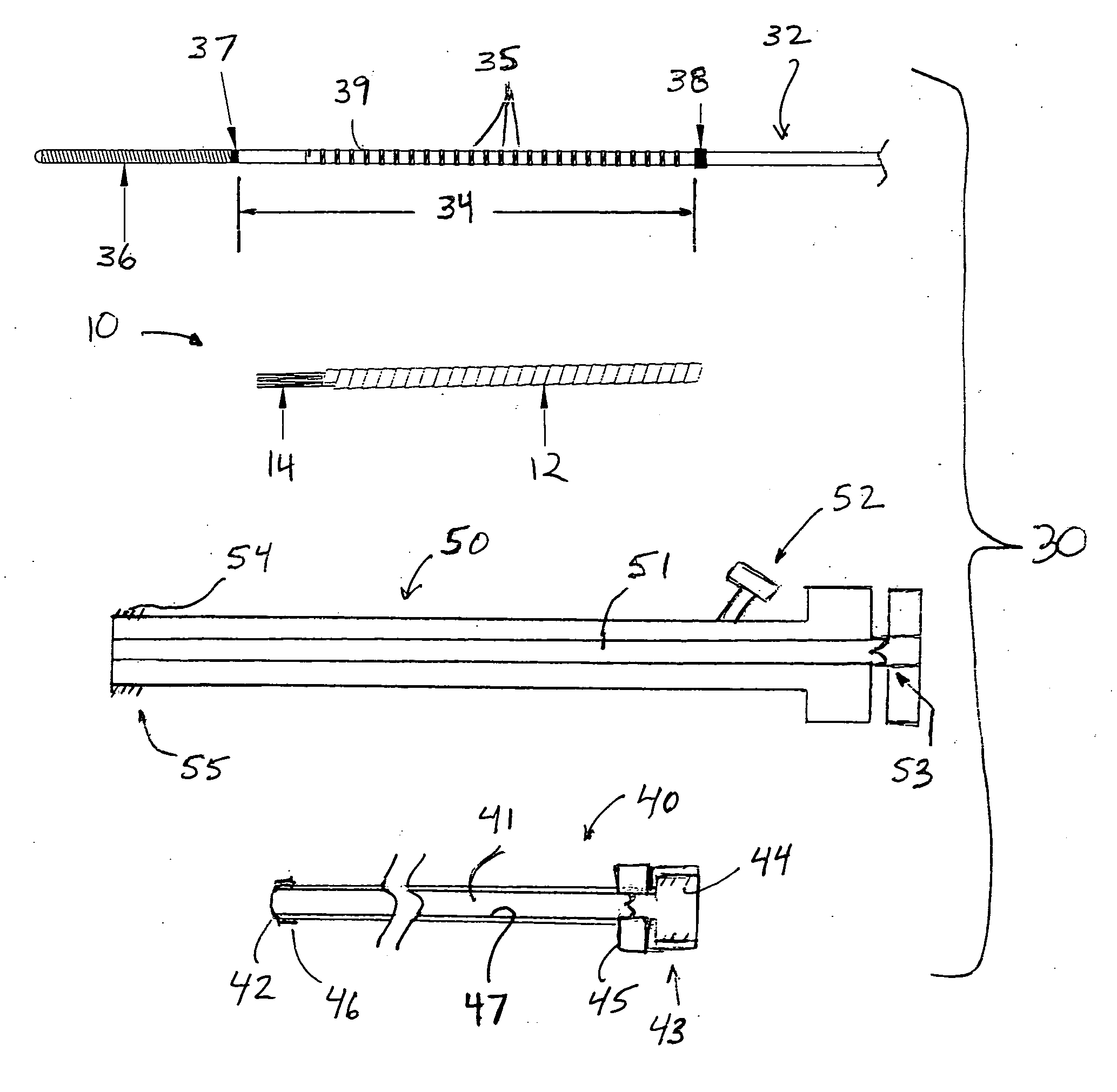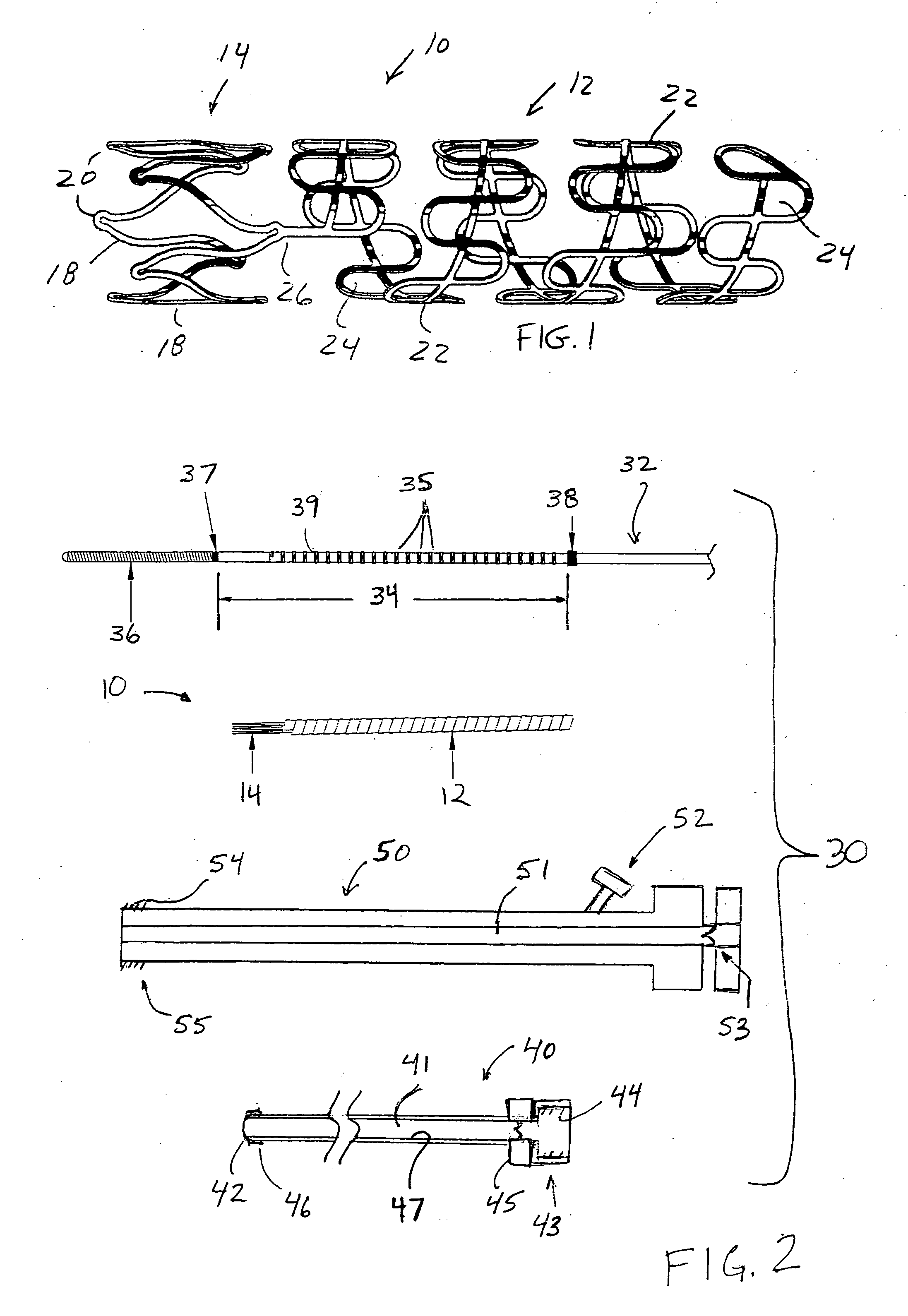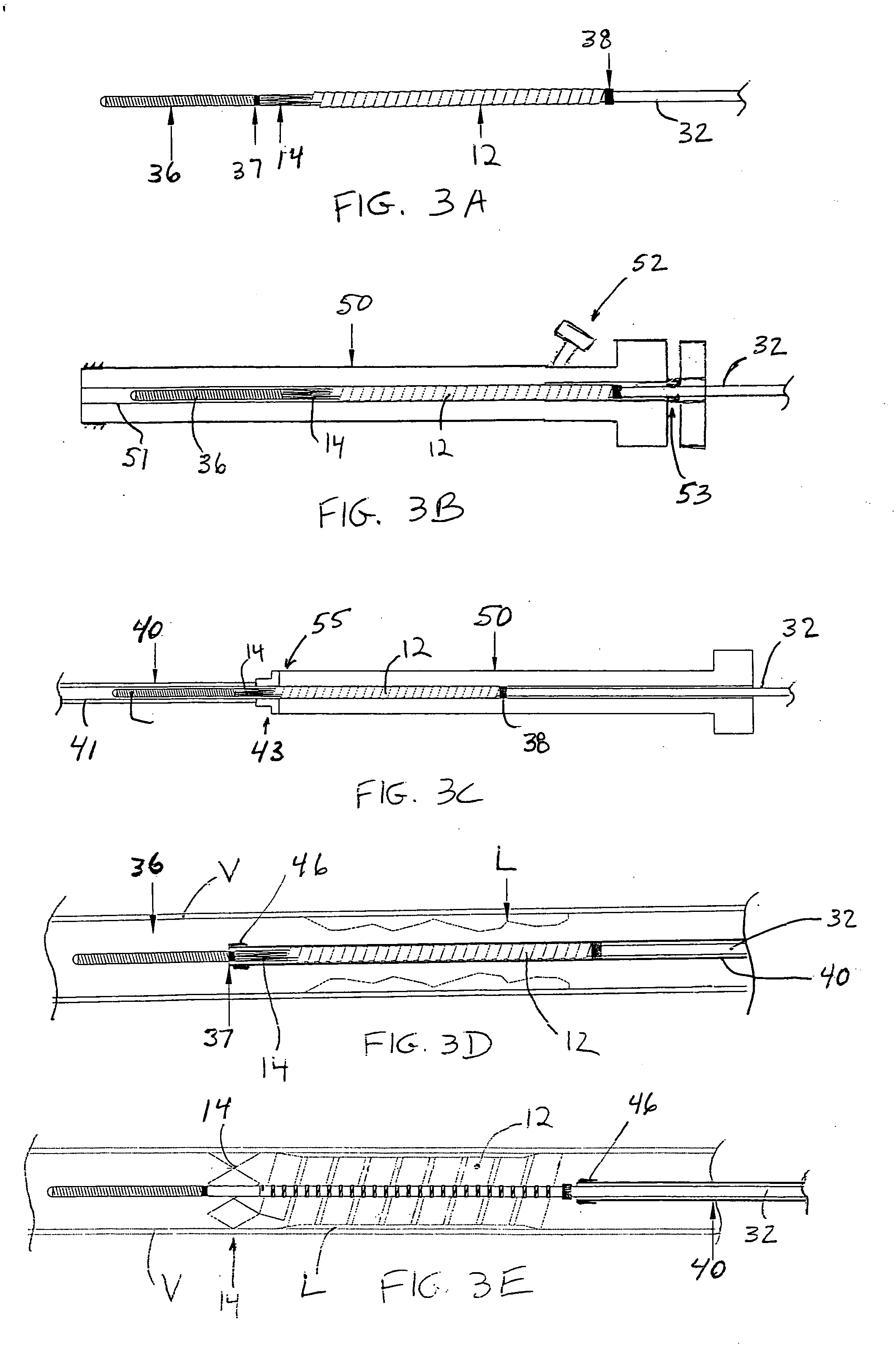Delivery system for vascular prostheses and methods of use
a delivery system and prosthesis technology, applied in the field of two-part delivery system, can solve the problems of limited ability to reduce the overall profile of the delivery system, limited ability to access smaller vessels, and small overall reduction of the delivery profile, so as to achieve the effect of reducing the profil
- Summary
- Abstract
- Description
- Claims
- Application Information
AI Technical Summary
Benefits of technology
Problems solved by technology
Method used
Image
Examples
Embodiment Construction
[0030] The present invention is directed to a delivery system for use with implantable vascular prostheses for a wide range of applications, such as treating aneurysms, maintaining patency in a vessel, and allowing for the controlled delivery of therapeutic agents to a vessel wall. In a preferred embodiment, the delivery system is configured for use with a stent having a helical ribbon portion joined, at its distal end, to a radially self-expanding anchor portion, such as depicted in FIG. 1.
[0031] Referring to FIG. 1, an exemplary stent for use with the delivery system of the present invention is described. As used in this specification, the terms “vascular prosthesis” and “stent” are used interchangeably. Vascular prosthesis 10 comprises helical section 12 and distal section 14, each capable of assuming contracted and deployed states. In FIG. 1, helical section 12 and distal section 14 are each depicted in the deployed state.
[0032] Vascular prosthesis 10 preferably is formed from...
PUM
 Login to View More
Login to View More Abstract
Description
Claims
Application Information
 Login to View More
Login to View More - R&D
- Intellectual Property
- Life Sciences
- Materials
- Tech Scout
- Unparalleled Data Quality
- Higher Quality Content
- 60% Fewer Hallucinations
Browse by: Latest US Patents, China's latest patents, Technical Efficacy Thesaurus, Application Domain, Technology Topic, Popular Technical Reports.
© 2025 PatSnap. All rights reserved.Legal|Privacy policy|Modern Slavery Act Transparency Statement|Sitemap|About US| Contact US: help@patsnap.com



